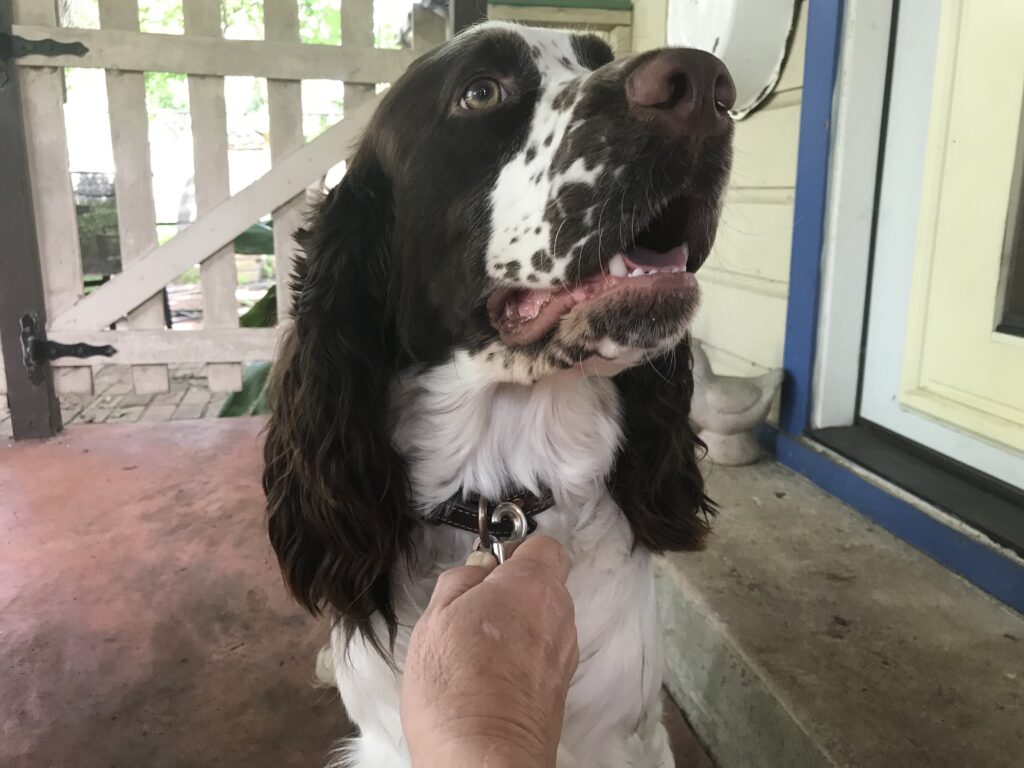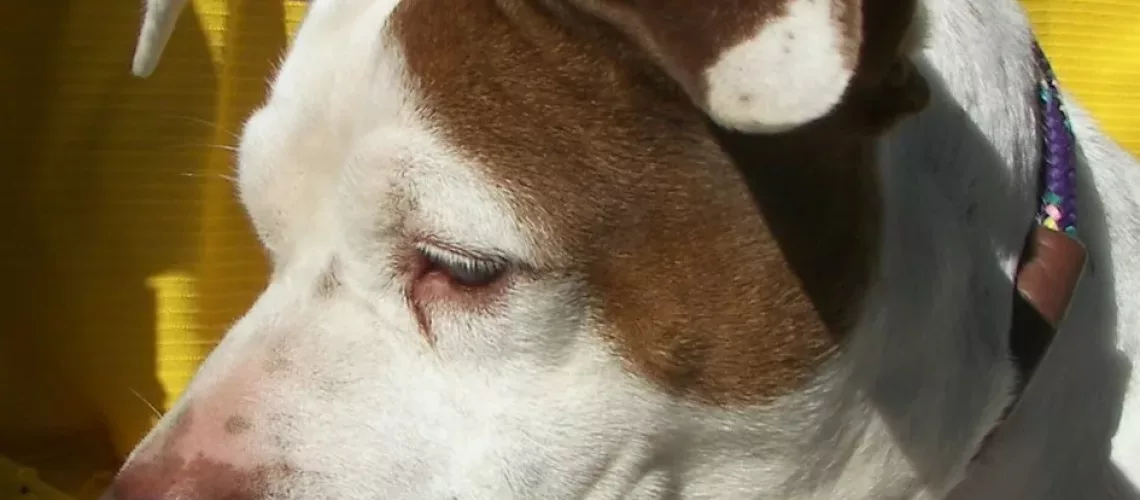- Leash Skills Series #1: Walking a dog
- Leash Skills Series #2: Defining Leash Walking
- Leash Skills Series #3: Leash Training Teamwork
- Leash Skills Series #4: Starting Leash Training
- Leash Skills Series #5: Why a Loose Leash?
- Leash Skills Series #6: Training with Treats – Treats = training tools!
- Leash Skills Series #7: Limitations of “Be a Tree”
- Leash Skills Series #8: Positive Reinforcement for Humans
Both the human and the dog need leash training skills for walks to be enjoyable. Train the necessary skills by breaking them down into simple, specific behaviors. Make your daily walks fun for both of you!

Dog Leash Skills
A dog should love his collar, harness, and leash
- If the equipment itself causes a dog to back away or be cautious, it’s not a good start to a pleasant walk. This applies to leash, collar, harness, and any other equipment you choose to put on your dog. Follow the training guidelines for leash skills offered here and you will be able to walk your dog with minimal equipment of the gentlest kind. Skills supersede equipment!
Your dog can do his part on your walks together
- The dog’s job in any situation is yours to define and train. If the human doesn’t know what you expect, how can a dog know what he’s supposed to do? A dog’s job can be as simple as walking at your left or right side as trained, keeping the leash loose, moving when you move, stopping when you stop, taking a break to go smell something when you say it’s time, and coming back to your side when asked. Dogs are thrilled to do their jobs when they understand what’s expected and the paycheck is good!
Your dog can learn to look to you for guidance
Your voice, body language and rewards constantly communicate what works for the dog. A squirrel, fire hydrant, or the front door isn’t what your dog should respond to. He should check with the human at the other end of the leash if he wants access to something.
Human Leash Skills
Planning
- Set specific goals. Define a position for yourself and the dog, know what’s likely to distract your dog from his job, and make plans to help him get through that situation. Training sessions require planning, too. Know what you’ll do with your other dog and the kids while you train this one. Manage other household situations while you give your dog the training time he needs.
Assessing
- Resist “going for a walk” until you and the dog have the skills you need. If your dog can’t keep the leash loose as you approach the front door, how can he keep the leash loose after you go out? What is likely to happen farther down the block, or heaven forbid, at the park? Train indoors first, then work up to going out the door. It will be fun!
Practicing your skills
- Create good habits of holding the leash, walking in a straight line with a dog next to you, paying attention to your dog’s needs, and feeding treats to the dog. It seems easy to give treats, but it’s different to give them as you’re moving. You want to reinforce moving with you because that’s what leash walks are all about. Therefore, you need to give the treats while you and your dog are moving forward together. If you are confident in your own skills, training your dog will be simple!
Leash training teamwork: Training the dog
- Dogs don’t come with leash skills; they need you to train them. Training itself requires a few skills. You need to observe and respond to behavior you like. You’ll need to set up situations in which correct behavior will occur so you can reinforce it. Learning to set a timer for training will help you stop before you lose focus or get frustrated; just one minute of good training can do wonders. Make training easy for yourself and see results more quickly. Work on each individual skill in a location and at a level where the dog can do it right and earn lots of treat rewards.
Leash training teamwork: Managing the leash
- The leash can be a tripping hazard for humans and dogs. It takes learning and practice to handle it so it’s loose and yet your dog doesn’t get tangled in it. You have to choose the path for the two of you; you both need to walk on the same side of any tree and pole you pass. Your dog will learn to make these choices on his own with your consistent practice. You have to choose when and how to give the dog a little more room to go sniff, and you have to manage the length of the leash when he does.
Leash training teamwork: Performing an emergency u-turn
- Being good at u-turns will prepare you and the dog for getting out of a situation when necessary. Practicing off-leash in a safe area, like in your kitchen, will help you and the dog hone your skills. Here’s a video of the finished product; I’d be giving the dog a treat for every step if we were just getting started training this!
Leash training teamwork: Getting your dog’s attention quickly
- Giving treats to reinforce the good leash behaviors you want will give your dog great reasons to check in with you. Walking forward when your dog is paying attention will build the joy of walking together as a team. As a result, you’ll be able to get your dog to quickly respond when you need him to as you explore the world together. This skill will allow the two of you opportunities to go more places together!
In our next article in the Leash Skills series, we’ll help you get started with some exercises to build great leash skills for you and your dog.
Leash Skills Series #4: Starting Leash Training


